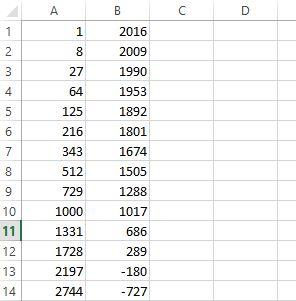Ask Professor Puzzler
Do you have a question you would like to ask Professor Puzzler? Click here to ask your question!
Lavinia from Italy writes: "Hi professor. I have just read your post about this year's number (2017). In this post you say that we can write 2017 as a the sum of one cube plus twice another. 2017 = 113 + 2 · 73 I was wondering how you managed manage to discover this. Did you use a formula or something? Thanks, Lavinia"
Thanks for asking, Lavinia. For those who missed it, this is a reference to the following blog post: Happy New Year 2017. In this blog post I make mention of the fact Lavinia pointed out:
2017 = 113 + 2 · 73
So how did I discover this odd fact? There wasn't a formula. I found it simply by playing around with the numbers to see what interesting things I found. I don't remember exactly what I was doing when I discovered that, but it probably involved a spreadsheet. I probably was thinking, "I wonder what results I'll get if I subtract perfect cubes from 2017!"
So I probably entered the following formula into cell A1 of a spreadsheet:
= ROW()^3 (cube the row number)
And then, in B1 cell put the following formula:
= 2017 - A1
Then I would have used the "fill down" feature to populate a bunch of rows with the results of those calculations:

Incidentally, this time as I looked at the rows of numbers, I realized that there's a perfect square in the second column: 289 = 172. So we can also write:
2017 = 123 + 172
I probably did something very similar to find the perfect squares that add to 2017:
A1 = ROW()^2
B1 = 2017 - A1
C1 = SQRT(B1)
This would have given the following:

2017 = 92 + 442
Incidentally, there was another row that had no decimal, further down the spreadsheet. It was row number 44, of course!
Excel (or any other spreadsheet application) can be a great help in exploring mathematical oddities. I realize that I'm a bit spoiled, having calculators and spreadsheets to use when playing with numbers. Imagine trying to figure out quirky number facts like these without even a calculator!


